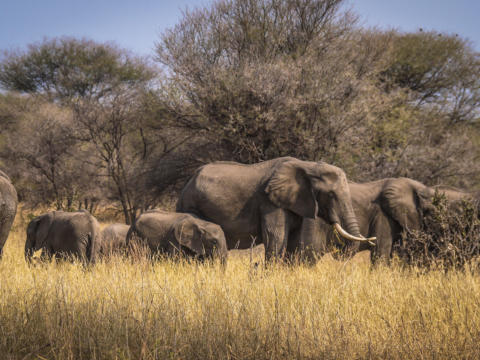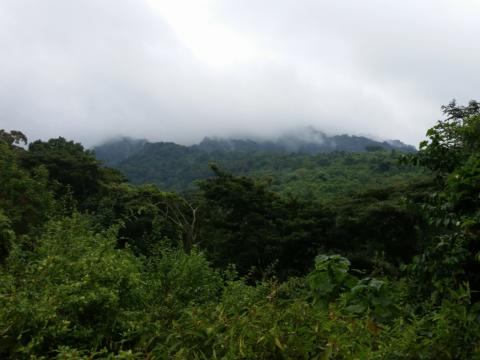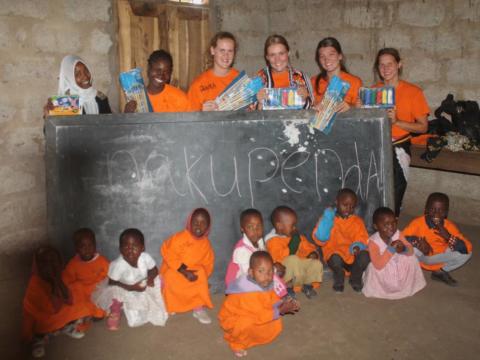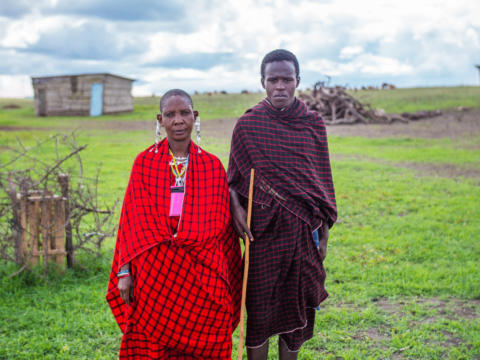Only 360€ per week!
Culture Week
Monduli - Tanzania
Culture Week
Monduli - Tanzania
Learn more about Tanzania, create new bonds, and immerse yourself in the local culture. Enjoy your kick start week into a new country and its way of life!
This week will take you around to important locations related to Tanzania’s culture and history. The week will feature orientation classes and visits to a Maasai Village and other places of interest, all which will help you integrate into the local culture and give you everything you need to settle into this developing part of the world!
Program Description
This program is an essential way to understand Tanzania’s culture and give you an opportunity to learn about its rich history. Not only will it make your trip more enjoyable, it will also help you to understand it’s way of life better and become familiar with the location, making any longer stay more comfortable.
The Culture Week will be packed with an introduction to local customs and traditions, do’s and dont’s and language classes, as well as a walking safari to scout animals in their natural habitat. You will visit highlights of the amazing town of Monduli, which is a bustling and developing township with rich history and many places of interest such as museums, art galleries and monuments, where you’ll be sure to learn more about this country’s struggle for independence and progress. You will also have plenty of opportunities to explore around the town, and enjoy the scenic roads outlining the wondrous outdoors.
We’re sure you’ll enjoy participating in our Tanzanian cooking class and taste your own food, but don’t worry, we’ll have chances to dine in the local eateries and taste the local cuisine too!
Aims & Objectives
- Help you memorize helpful phrases in the local language
- Broaden your knowledge of the local customs, history and culture
- Provide a full induction, preparing you for a longer stay
Schedule
Monday
- Breakfast
- Introduction meeting, House rules, Setting Expectations, Health and Safety Advice and handling of documents.
- Tanzanian Do's and Don'ts, Culture introduction and country history and Intensive Swahili Language Lessons.
- Tour around the compound and local area; where to find local shops, and arrange a sim-card if necessary.
- Lunch
- Hike up the beautiful Monduli mountains (weather and time permitting)
- Dinner
Tuesday
- Breakfast
- Visit Maasai Museum/Snake Park & Handicraft Gallery
- Lunch
- Visit local Maasai Livestock Market
- Cooking class
- Dinner (enjoy what you helped to prepare)
Wednesday
- Breakfast
- Visit Arusha town: Cultural Heritage Art Gallery, local craft market, etc.
- Lunch
- Visit Arusha: Museum, Monuments, and supermarket
- Dinner
Thursday
- Breakfast
- Depart for Walking Safari
- Explore local terrain and scout animals in their natural habitat
- Lunch
- Enjoy sports activities with the community or take some free time
- Dinner
Friday
- Breakfast
- Handicrafts: Beadwork session with Maasai women – learn how to make your own jewelry!
- Lunch
- Learn Maasai dress and some Maa language
- Evaluation meeting and placement introduction/or free time
- Dinner
Note: This schedule can be changed and/or amended depending on weather conditions, local conditions and unforeseen circumstances.
Participant Criteria & Requirements
Standard Requirements
Minimum age: –
Maximum age: –
Minimum English level: Basic
CRB required: On Signup
Passport copy required: No
Resume copy required: No
Required qualification: None
Additional Requirements
There are no further requirements for this program.
Additional Equipment
No additional equipment required.
Location
You will be staying in the district of Monduli located within the Arusha region, in northeastern Tanzania. The Monduli district is an extremely popular spot for tourists to learn how the local Maasai people live as well as observe the natural environment. Numerous attractions such as Lake Manyara, Mount Meru, Kilimanjaro, Serengeti, and Ngorongoro can be found nearby and are the wonders of the region.
About the Accommodation
You will be staying in our local program center or with a host family, to provide you with a degree of basic comfort. There may be western-style toilets, but the traditional squat-style flush toilet may also be what is in use. Sometimes water will need to be heated for showers and these may be bucket style. The accommodation is on a local school campus and there is lots of green space to enjoy. We have a big garden available where you can relax during the daytime, and during clear nights, you can even star gaze at the Milky Way from here! We suggest that all participants get a local SIM card and buy a bundle to maintain personal internet access.
Food Arrangements
Meals are inspired by the local cuisine and consist of a lot of corn, rice, potatoes, and bananas. Some beef, goat meat, beans, and a few green leafy vegetables will help to add nutrients to your daily meals. There are very few dishes that will be served that are the typical western style, so please be prepared for a food adventure as well.
Facilities
There is a multitude of shops located within walking distance of the accommodation as well as small local restaurants, salons, pharmacy, an ATM and local markets). The hospital is also within walking distance and is well equipped.
There is a local “dala-dala” (minibus) area that can take you to Arusha, which is a major city in Tanzania where you can find numerous markets, shops, malls, restaurants, supermarkets and everything you might need within an hour.
Activities & Events
No scheduled activities outside the program.
Sights & Surroundings
Ngorongoro Conservation Area
Expanding over plains, forests, and savannas, Ngorongoro Conservation Area hosts Ngorongoro Crater, the world’s largest caldera where incredible wildlife coexists with the Maasai. In here, you will be able to find wildlife… in a crater! A must when in Tanzania as it is one of the most emblematic locations of the continent.
Tarangire National Park
Tarangire is famous for its population of elephants and the symbolic Baobab tree. During the dry season, wild animals inhabit the park and you will be able to find zebras, giraffes, buffaloes, elephants, wildebeests and more! While not as common, you might be able to find a lion here as well if you are lucky!
Serengeti National Park
Serengeti is probably the most worldwide known National Park in the world. It is believed to hold the largest population of lions in the world! Aside from that, cheetahs, buffaloes, zebras, giraffes, rhinos, hippos live here. Make sure you allow yourself at least two days to visit and stay overnight in either a campsite or a lodge. Serengeti cannot be done in just one day as it is so huge!
Arusha National Park and Mount Meru
The home of Mount Meru, the second largest peak in Tanzania after Kilimanjaro. While it is not the best place to spot wildlife compared to Ngorongoro or Serengeti, it is still the home of many species including giraffes, warthogs, Cape buffaloes, lions, elephants, flamingos and more! However, the main attractions here are the landscapes that line the park to every side: to the west, you will find Meru Crater and the Jekukumia River. To the south, you will find Ngurdoto Crater and to the north.east, Momelia Lakes, which vary in color due to algae and are made even brighter by many different species of birds who love to swim in the water!
Lake Manyara National Park
During the wet season, pink flamingos brighten up the lake, which make it the go-to place for bird watchers. They do leave during the wet season, but Masai Lions, Leopards, hippos, giraffes, zebras, elephants, blue monkeys, gazelles and cheetahs can be found here year-round!
Moshi and Mount Kilimanjaro
Moshi is located about two and a half hours away from Monduli and can be easily reached from Monduli by taking a “dala dala” to Arusha and then another one to Moshi from there.
Moshi is a sleepy town with a Western vibe as it is the starting point of the Mount Kilimanjaro climb! On a clear day, you can get excellent views of the highest mountain in Africa (tip: head over to Moshi Train Station for a top-notch view. This station is no longer in use for transportation purposes, but the locals have made the most out of it by placing some chairs and selling drinks and snacks with a view!).
Kikuletwa Hot Springs
A lesser-known but still amazing attraction located between Arusha and Moshi are Kikuletwa Hot Springs. The water isn’t actually hot, but its temperature is perfect for swimming and relaxing. It is known as an oasis as it is covered with jungle and the water here is so blue that you wouldn’t believe! It is a favorite go-to place for locals and expats alike and there is even a rope you can use to dive into the water with style.
Arusha
Arusha is one of the main cities of Tanzania and is easy to reach from Monduli in less than an hour and a half. From here, most safari companies depart to many of the national parks surrounding it, so it is your go-to place for wildlife! In Arusha, you will be able to find a myriad of things to do – from Maasai markets selling crafts to bring back home, to cinemas, shopping malls, Western food, and more!
Hiking Around Monduli
Monduli is set amidst lush mountains that are a great opportunity for hiking off-the-beaten-path. There are numerous trails, one of which leads to a gorgeous waterfall. Speak to our coordinator to arrange, as the government needs to grant you permission (for a fee) to visit beyond certain spots in order to conserve the area.
Iringa and Ruaha National Park
Not that close by, but an interesting place nonetheless if you have the time after finishing our programs! Ruaha National Park is a much lesser visited place for wildlife, but its few visitors are never disappointed by its beauty! In fact, it is the largest National Park in Tanzania and boasts cheetahs, the second largest population of Leopards in Africa, buffalos, hippos, and more!
Zanzibar
While a bit far, it is possible to fly to Zanzibar for a weekend from Arusha airstrip, a small airport that operates domestic flights and is not too far from our center! Zanzibar is known for its sandy white beaches and unique culture. While here, don’t miss Stone Town, a place that is emblematic for its mazes and spices (take a spice tour for sure!). Another must is a visit to Prison Island, where you can spot dolphins and marine life. Travel north or east of the island for some of the best and cleanest beaches in the world and enjoy the Indian Ocean at its best!
Transportation
From this location we provide free transport to your next program at the following location(s):
- Arusha
Quick Facts
Name: United Republic of Tanzania
Population: 52 million
Capital: Dodoma
Language: Swahili, English
Currency: Tanzanian Shilling (TZS)
Time zone: EAT (UTC +3)
Country Information
Tanzania is a large country in Eastern Africa within the African Great Lakes region. Parts of the country are in Southern Africa and it is bordered by Kenya and Uganda to the north; Rwanda, Burundi, and the Democratic Republic of the Congo to the west; Zambia, Malawi, and Mozambique to the south; and by the Indian Ocean to the east. It is home to Kilimanjaro, Africa's highest mountain, in its northeastern region and is considered the Safari capital of the world!
Tanzania is a presidential constitutional republic, and since 1996, its official capital city has been Dodoma, where the President's Office, the National Assembly, and some government ministries are located. Dar es Salaam, the former capital and its largest city, retains most government offices and is the country's principal port and leading commercial centre.
Climate
Climate varies greatly within Tanzania. In the highlands, temperatures range between 10 and 20°C during cold and hot seasons respectively.
The rest of the country however has temperatures rarely falling lower than 20°C. The hottest period extends between November and February (25–31°C) while its coolest period occurs between May and August (15–20°C).
Tanzania has two major rainfall regimes: one is uni-modal (October–April) and the other is bi-modal (October–December and March–May). The former is experienced in southern, central, and western parts of the country, and the latter is found in the north from Lake Victoria extending east to the coast.
Culture
Tanzania's large population is diverse, composed of several ethnic, linguistic and religious groups.
Christians and Muslims make up the large majorities, but 2% still practice Traditional African Religion.
Over 100 different languages are spoken in Tanzania, making it the most linguistically diverse country in East Africa. All four of Africa’s language families are spoken (Bantu, Cushitic, Nilotic, and Khoisan), but Swahili and English are its official languages, though Swahili is pushed officially as a unifying language, to the detriment of other minority languages, even English.
Transportation
Car
Although much of its roads are usually in poor condition, most transport in Tanzania is by road, 80% of its passenger traffic in fact. Rentals, Taxis, buses and mini buses (locally known as “dala dala”) account for the main methods of transportation.
Train
Tanzania’s railways have a spotty safety record and it is not uncommon to have passengers experience frustration with slow journeys, frequent cancellations and delays, but if you have the time – it is a unique way to travel with amazing landscapes decorating the backdrop!
Airplane
Tanzania has four international airports, along with over 100 small airports or landing strips; airport infrastructure tends to be in poor condition although there are reports of improvements in this area. Local airlines in Tanzania include Air Tanzania, Precision Air, Fastjet, Coastal Aviation, and ZanAir.





